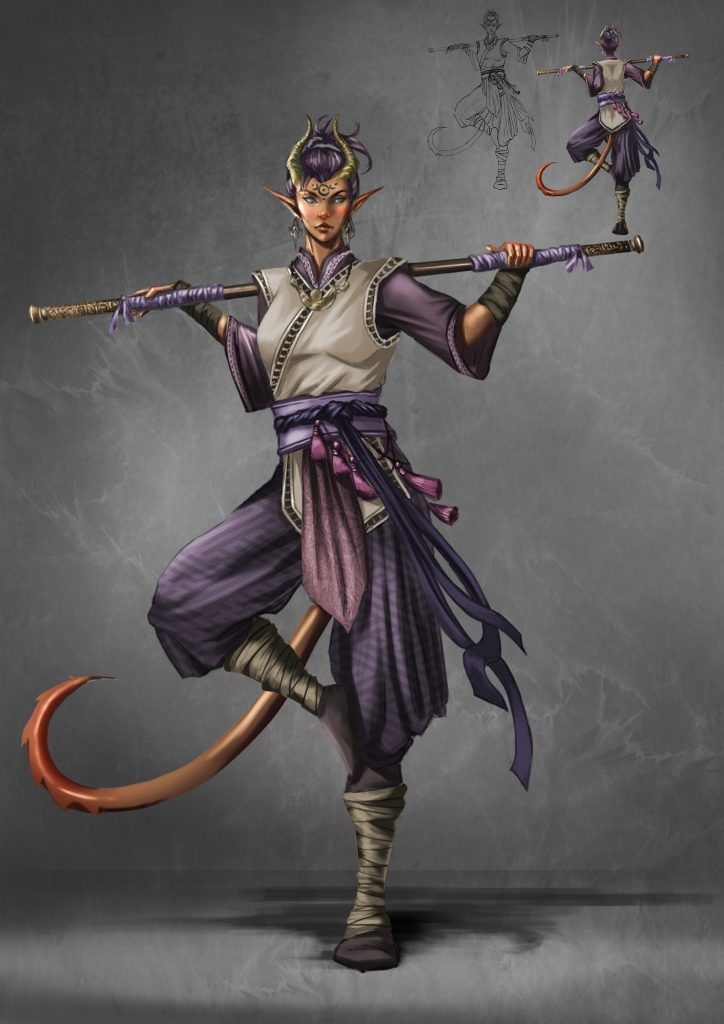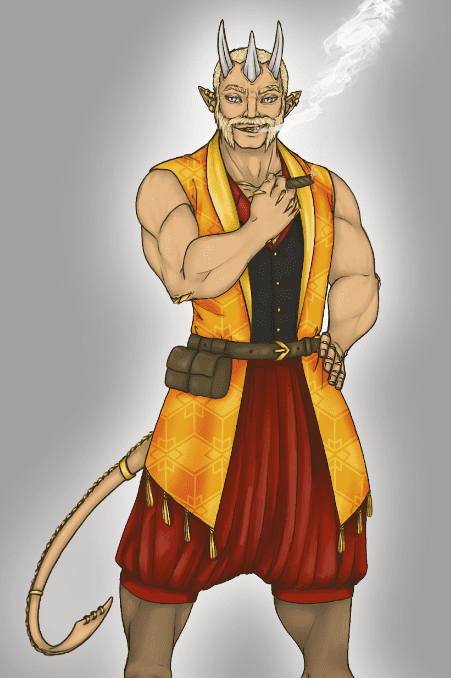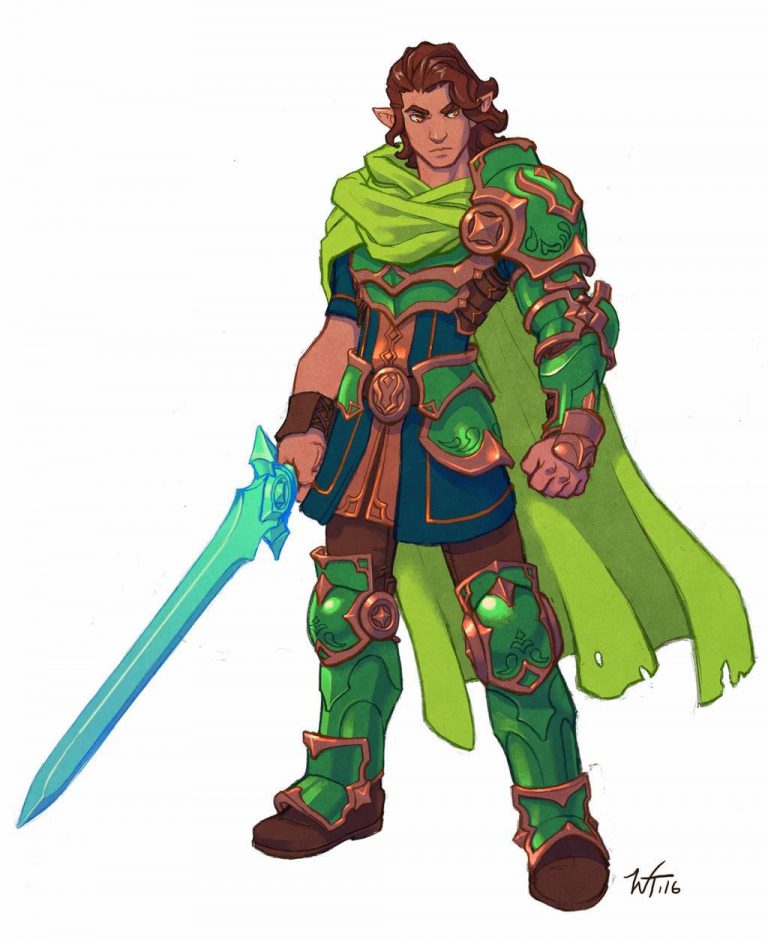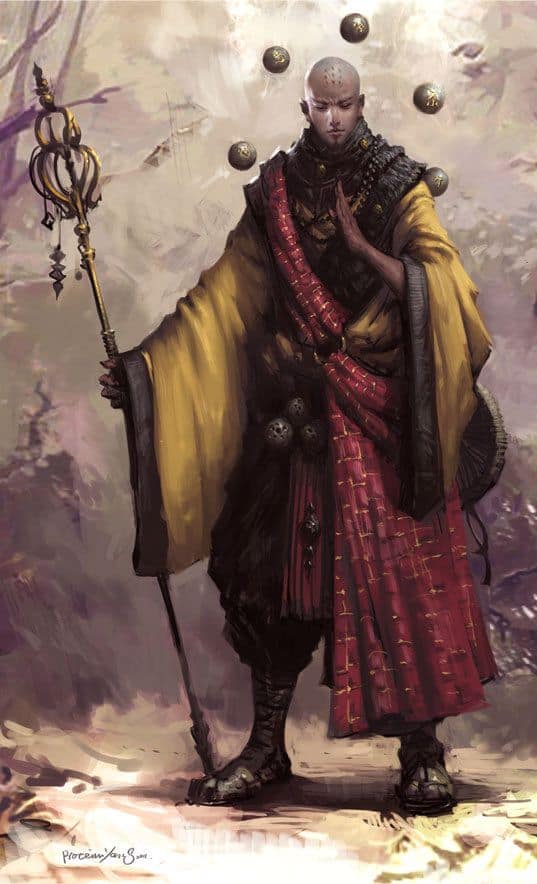D&D 5e: Tiefling Monk Guide

D&D 5e: Tiefling Monk Guide
Do you want to run across rooftops, while doing backflips, to punch someone in the face? My friend, I have good news for you. With this guide, you will be running up against walls in no time. For that extra, burning hot, hellish flavor we will be using a Tiefling as the base for our character.
The Tiefling race AND the Monk class can be found in the Player’s Handbook. Click here to pick up your own copy of The Player’s Handbook!
How to Make a Tiefling Monk
To make a Tiefling monk we take a Tiefling and put them through some training. Tieflings get an extra point in intelligence and two points in charisma. You will also gain the standard 30 feet walking speed, Darkvision up to 60 feet, and fire resistance. You get two languages, common and infernal. Finally, you will get the Infernal Legacy feat. This feat grows as your monk level becomes higher. You start with the cantrip thaumaturgy, but as you reach 3d level you may cast hellish rebuke at second level for free, every long rest. At the 5th level, you may do the same but with the darkness spell instead. You use your charisma modifier to cast these spells.
Now, there is the monk part, where your other stats are going to come into play. Whether you’re using the standard array, point buy, or rolling your stats this guide remains the same.
As a monk, you want to take your highest stat and put it in dexterity. All your combat is going to revolve around how good your dex is. Put your second and third highest stats in wisdom and constitution. You will be using intelligence and charisma as dump stats, but those should be pulled up a little by your Tiefling stats. You might want to pump some points into strength if you want to shove and grapple your enemies a lot.
As a level 1 monk, you get two saving throws, strength, and dexterity. You also get two skill proficiencies + the ones from your background. The best picks are Stealth and Acrobatics. You were going to run across rooftops anyways, why not do it sneakily? And acrobatics can be useful for any kind of real physics-defying shenanigans.
Finally, you get the feats Unarmoured Defence & Martial Arts. Especially Martial Arts is going to be your friend.
Since monks can’t wear armor Unarmoured defense is going to help you get some ac. Once you get your Dex and Wis up to 20 you will be awarded 20 AC. A nice long-term goal, to which you can get faster with the appropriate feats.
Martial Arts offers 3 major benefits.
- Dex can be used instead of str when making an unarmed attack or when using monk weapons.
- You can roll a d4 in place of the normal damage of your unarmed strike or monk weapon. This die becomes higher as you gain monk levels, which you were going to do anyway.
- When making an unarmed attack action, you may follow it up with an unarmed bonus action.
As for weapons, either go unarmed and straight-up beat enemies to death with your fists or get yourself some of those cool monk weapons.
Now, from the second level onwards you will have Ki points. Anything you can spend Ki points on is generally useful and aside from running up against walls the reason you want to play a monk.
At the third level, you will get to choose your monastic tradition, all of which are good and viable picks.

How to Play a Tiefling Monk
Monks are really good for hit and run tactics in combat. At higher levels, you can use Ki-points to devastating effect. Remember that you aren’t invulnerable with loads of health and armor. You get in, punch some people, and you get out.
How to Roleplay as a Tiefling Monk
The monks in D&D are based on Chinese, Korean, and Japanese mythologies and history. As such, monks are generally depicted as martial artists and not as half-bald dudes working hard for the favor of their god.
Historically there have been many different kinds of monastic orders based on a wide variety of beliefs. Your monk should reflect the kind of monastery they came from. Maybe you’re a stoic philosopher or perhaps you were trained and bred for war. It is likely that your monk adheres to a specific set of rules, either set out by their god or philosophy.
I recommend either the hermit, scholar, or soldier background since those fit best thematically, but all are viable depending on what you want to play.
Credit for the art to Theresa Königseder-Haller








